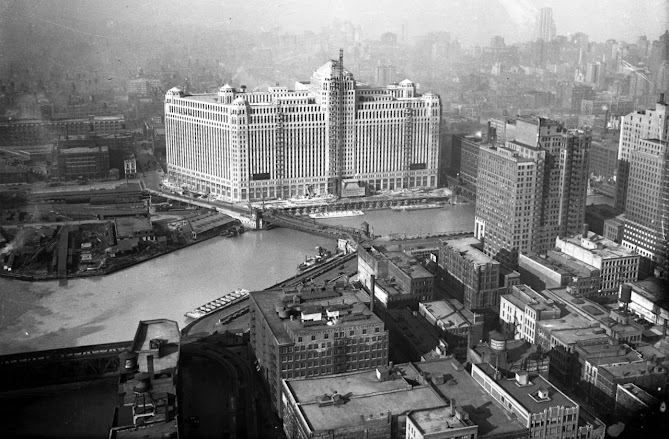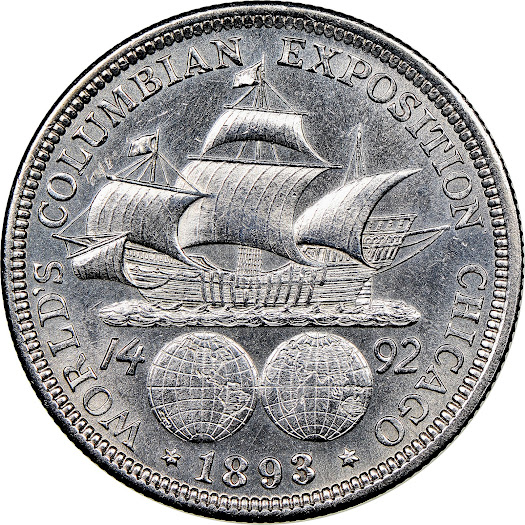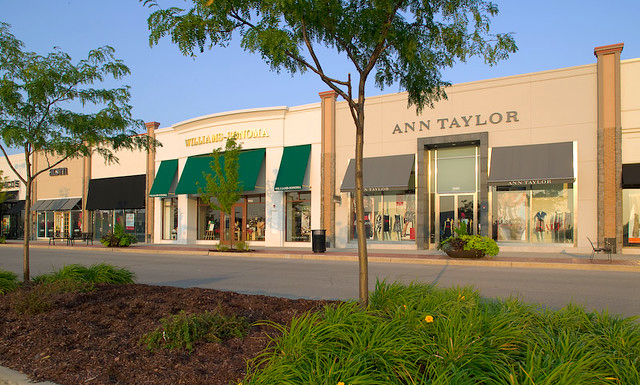The Merchandise Mart, 222 Merchandise Mart Plaza, a colossal monolith on the Chicago River, boasts a rich history as grand as scale and as vibrant as the city itself. From its Art Deco beginnings to its modern-day transformation as a tech hub, I delve into the whole story of this iconic Chicago landmark:
In the roaring 1920s, Chicago retail titan Marshall Field & Company envisioned a revolutionary concept: a single, centralized marketplace for wholesale goods. Enter James Simpson, the company's visionary President, who commissioned the construction of the 4.2 million square feet Merchandise Mart.
 |
| The Merchandise Mart is under construction, as seen from the Lake Street Bridge in 1929. —Chicago Tribune historical photo. |
Transforming the site of the historic Wells Street Station site, construction began in 1928; by 1930, the behemoth stood tall, dwarfing its surroundings. At the time, the Mart was the largest building in the world by floor space, a title it held for over a decade. Its imposing Art Deco facade, adorned with geometric patterns and stylized eagles, reflected the era's optimism and grandeur.
 | |
| The view of the new Merchandise Mart was still under construction in 1929. —Chicago Tribune historical photo. |
The Mart, designed by Alfred P. Shaw of Graham, Anderson, Probst & White, embraced the Art Deco aesthetic. Its sleek lines, geometric forms, and limestone-terracotta cladding exuded modernity and ambition.
The Mart wasn't just a building; it was a self-contained city. It housed Field's wholesale showrooms, manufacturing facilities, and a plethora of amenities for tenants and visitors alike. Restaurants, banks, postal services, and even a telegraph office buzzed with activity, making the Mart a bustling hub of commerce.
 |
| An aerial view of the Merchandise Mart in 1930. —Chicago Tribune historical photo. |
The Mart's official opening in 1930 was a momentous occasion. It housed Field's wholesale showrooms, manufacturing facilities, restaurants, a bank, a post office, a telegraph office, and a plethora of amenities for tenants and visitors alike. It was a self-contained city within a city. However, the Great Depression soon cast a shadow, making it initially challenging to fill the vast space.
sidebar
The Merchandise Mart was once the largest building in the world by floor space, a title it held until the Pentagon's construction in 1943.
The Great Depression threw a wrench in the Mart's initial success. The wholesale market dwindled, forcing the Mart to diversify. Over the years, it transitioned from a purely wholesale center to a multi-purpose complex, welcoming office tenants and diverse businesses.
It housed manufacturing facilities for war materials during World War II (1939-1945). The legendary Kennedy family acquired the Merchandise Mart in 1945, ushering in a new ownership era. Under their guidance, the Mart continued to evolve, adapting to the changing times.
In the 1950s, it found new life as a center for design and architecture.
sidebar
The building's rooftop was used as a landing pad for helicopters during the early days of air travel by helicopter. In 1953, New York Airways became the first scheduled passenger helicopter air carrier in the United States. In the 1950s and 1960s, "helicopter airlines" operated in New York, Chicago, Los Angeles, and San Francisco, carrying people to and from the airport at high fares.
 |
| Merry Christmas is written in lights on the Merchandise Mart on November 25, 1964. —Chicago Tribune historical photo. |
INTERESTING MERCHANDISE MART FACTS:
Federal, State, and Local Government Offices:
During World War II, the Merchandise Mart saw declining tenant interest in its original function. The building was converted to house various federal government offices to fill vacancies due to its vast space and central location. This lasted until the 1950s.
The Mart again welcomed several state and local government offices as tenants in 1990.
The CTA's presence in the Merchandise Mart:
The CTA moved its headquarters into the Merchandise Mart in 1942, occupying several floors. The CTA's offices in the Merchandise Mart were home to various departments, including administration, planning, and operations. The CTA relocated its headquarters to a new building at 567 West Lake Street, Chicago, as part of a larger effort to improve its efficiency and customer service.
The CTA sold its remaining office space in the Merchandise Mart in 2006.
 |
| The CTA Merchandise Mart 'L' Station. |
The Merchandise Mart is still a central CTA transportation hub, with an 'L' station on the Red Line (the North-South line), the Brown Line (the Ravenswood line), and the Purple Line (the Evanston Express line) on weekdays during rush hour.
 |
| 1970 Merchandise Mart CTA Station. The'L' sign says "Evanston - Wilmette." |
The CTA buses that stop at the Merchandise Mart are:Washington & State (Routes 126, 152, 156).Michigan & Randolph (Routes 62, 128, 151, 155, 157).Orleans & Merchandise Mart (Routes 60, 65).The RTA buses that stop at the Merchandise Mart are:Merchandise Mart (Routes 27, 36).
The iconic "heads" (busts) on the roof of the Merchandise Mart building actually had two distinct chapters in the building's history. While neither group currently graces the building's rooftop today, their stories deserve to be told:
Chapter 1: The Native American Chiefs (1930-1961)
A Controversial Adornment: When the Merchandise Mart opened in 1930, its rooftop boasted 56 sculpted heads of Native American chiefs, designed by John Awre.
Uncertain Names: Not all the chiefs had identified names. Some were assigned names based on tribal affiliations or geographical regions, while others remained anonymous. The identification process was complex and controversial, so some names may be inaccurate or disputed.
Stereotypical Representation: It's important to remember that the sculptures reflected the era's romanticized and inaccurate portrayals of Native American cultures. They did not represent individual historical figures and perpetuated harmful stereotypes.
- Apache: "ah-PAH-chee," Indigenous Tribe & Chiefs.
- Arapaho: "A-ra-pa-ho," Indigenous Tribe & Chiefs.
- Arikara: "uh-rih-kuh-rah," An Indigenous Tribe.
- Assiniboine: "uh-sin-uh-boin," An Indigenous Tribe.
- Blackfoot: "Black-foo-t," Indigenous Tribe & Chiefs.
- Caddo: "KAH-doh," Indigenous Tribe & Chiefs.
- Cayuga: "kay-YOO-ga," An Indigenous Tribe
- Cheyenne: "shy-AN," Indigenous Tribe & Chiefs.
- Cherokee: "chEH-ruh-kEE," Indigenous Tribe & Chiefs.
- Chickasaw: "CHIK-ə-saw," Indigenous Tribe & Chiefs.
- Chinook: "Chok-NOOK," Indigenous Tribe & Chiefs.
- Chippewa: "chi-puh-waa," Indigenous Tribe & Chiefs.
- Choctaw: "Chauk taw," Indigenous Tribe & Chiefs.
- Comanche: "kuh-MAN-chee," Indigenous Tribe & Chiefs.
- Cree: Indigenous Tribe & Chiefs.
- Crow: The crow tribe's name is Apsáalooke "ahp-SAH-loo-keh," Indigenous Tribe & Chiefs.
- Delaware: A Tribe - called initially the Lenape tribe, aka Munsee and Unami bands.
- Flathead: A Chief - "Ahl-shah-taa-pee," named by Europeans for Chief (Flat Head).
- Gros Ventre: "Groh Vahn-truh," ("big belly," French) Indigenous Tribe & Chiefs.
- Haida: "Hay Da," Indigenous Tribe & Chiefs.
- Hopi: "HOH-pee," An Indigenous Tribe.
- Huron: "Hoo-RON," Indigenous Tribe & Chiefs.
- Iroquois: "ear-ro-kwa" (French), Indigenous Tribe & Chiefs.
- Kalapuya: "Cal-uh-poo-yuh," An Indigenous Tribe.
- Kansas: "KAN-zəs," Indigenous Tribe & Chiefs.
- Kiowa: "Hy-oh-wa," An Indigenous Tribe.
- Kootenay: "KOOT-nee," Indigenous Tribe & Chiefs.
- Lenape: "lun-NAH-pay," An Indigenous Tribe - aka Delaware Tribe
- Lummi: "LUH-mee," Indigenous Tribe & Chiefs.
- Mandan: "mah-N'-DAN," Indigenous Tribe & Chiefs.
- Menominee: "Meh-NOH-meh-nee," Indigenous Tribe & Chiefs.
- Miami: Indigenous Tribe & Chiefs.
- Micmac: "Meeg-em-ach," An Indigenous Tribe.
- Modoc: "MO-dock," An Indigenous Tribe.
- Mohawk: "Mo-hawk," Indigenous Tribe & Chiefs.
- Navajo: "na-va-ho," Indigenous Tribe & Chiefs.
- Nez Perce: "Nay Pers-say," Indigenous Tribe & Chiefs.[1]
- Nuutka: "Nuu-chah-nulth," aka Nootka, An Indigenous Tribe.
- Ojibwe: "Oh-JIB-way," Indigenous Tribe & Chiefs.
- Osage: "OH-sage," Indigenous Tribe & Chiefs.
- Ottawa: "Ah-dah-wa," Indigenous Tribe & Chiefs.
- Papago: "pap-uh-goh," Indigenous Tribe & Chiefs.
- Pawnee: "PAWN-ee" Indigenous Tribe & Chiefs.
- Penobscot: "peh-NOB-skot," Indigenous Tribe & Chiefs.
- Pomo: "po-MOH," Indigenous Tribe & Chiefs.
- Ponca: "Pohn-kuh," Indigenous Tribe & Chiefs.
- Potawatomi: "Boh-da-wah-dmi," (Tribal Pronunciation), An Indigenous Tribe.
- Pueblo: a group of tribes (i.e., The Illinois), Indigenous Tribes & Chiefs.
- Quapaw: An Indigenous Tribe.
- Sauk (Sac) & Meskwaki (Fox): "Mesk-wa-ki," Indigenous Tribes.
- Salish: "Slah-LEESH," Indigenous Tribe & Chiefs.
- Seminole: "Sem-uh-NO-le," Indigenous Tribe & Chiefs.
- Seneca: "Sen-eh-kuh," Indigenous Tribe & Chiefs.
- Shoshone: "shoh-SHO-nee," An Indigenous Tribe.
- Sioux: "soo," (confederation of 7 nations; i.e., Illinois), Indigenous Tribes & Chiefs.
- Ute: "Yoo-tey," Indigenous Tribe & Chiefs.
[1] The name "Nez Perce" ("pierced nose") is actually a misnomer: It comes from French fur traders who mistakenly applied it to the tribe based on a misunderstanding of their cultural practice of nose ornaments. The tribe prefers to be called Nimiipuu, which means "The People."
This reflected a popular Art Deco motif of the time but also carried problematic connotations of cultural appropriation and romanticized stereotypes.
Shifting Tides: As social awareness grew in the mid-20th century, the depictions of the chiefs faced increasing criticism for their insensitivity. By 1961, the decision was made to remove them from the building.
What Happened to the "Indian Heads?" In 1961, the heads were deemed outdated and removed from the roof.
What Happened to the "Indian Heads?" In 1961, the heads were deemed outdated and removed from the roof.
Most were sadly destroyed, but a few found their way to different destinations:
- Two busts were found in the Campia family's home in Lake Forest and auctioned off in 2014.
- January 26, 2024, the exact location of the remaining heads is unknown.
The two auctioned busts might be in private collections, but their specific ownership is not publicly available.
So, while most of the Indian "heads" are unfortunately lost to history, a small piece of their legacy survives in private hands.
Chapter 2: The Merchandise Mart Hall of Fame
Standing tall as guardians of American commerce, eight colossal bronze busts grace the entrance of The Merchandise Mart, the world's largest wholesale buying center in Chicago. These larger-than-life figures immortalize some of the most influential figures in American retail history, their names and companies woven into the very fabric of consumer culture.
Commissioned in 1953 by Joseph Patrick Kennedy Sr., the 44th U.S. Ambassador to the United Kingdom, these four-times-life-size busts stand as a testament to the vision and dedication of the men who shaped the American retail landscape. Each bust, meticulously crafted in bronze, captures the essence of its subject, with its determined gazes fixed on the future of commerce.
From Frank Winfield Woolworth's 5 & Dime stores to Marshall Field's luxurious emporiums, these pioneers revolutionized how Americans shopped. Their innovative ideas and unwavering commitment to quality forever changed the face of retail, leaving an enduring legacy that inspires generations of entrepreneurs.
 |
| Marshall Field |
- Frank Winfield Woolworth: The founder of F.W. Woolworth Company.
- Marshall Field: The founder of Marshall Field and Company.
- Aaron Montgomery Ward: The founder of Montgomery Ward & Company.
- Julius Rosenwald: Was a Sears, Roebuck, and Company President.
- Robert Elkington Wood: Was a Sears, Roebuck, and Company President.
- John Wanamaker: The father of modern advertising.
- Edward Albert Filene: Preseident of William Feline & Sons. Filene's department stores.
- George Huntington Hartford: He founded The Great Atlantic & Pacific Tea Co. (A&P)
Compiled by Dr. Neil Gale, Ph.D.

















_BJ_and_Dirty_Dragon_05-16-1970_05.jpg)






















